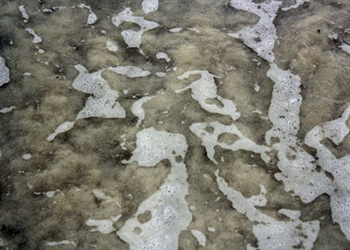Home Restoration After Water Damage – Looking At the Different Categories of Water
 When it comes to home restoration after water damage, there is a common misconception that all it takes is a water pump, wipers, and fans. However, this isn’t the case. Even if you manage to get the water out and dry your home with a few fans and proper ventilation, getting bacteria and smell out is a whole another ballgame.
When it comes to home restoration after water damage, there is a common misconception that all it takes is a water pump, wipers, and fans. However, this isn’t the case. Even if you manage to get the water out and dry your home with a few fans and proper ventilation, getting bacteria and smell out is a whole another ballgame.
Not only does the water need to be pumped out, based on where it came from, you may also have to test it for bacteria and take preventive actions accordingly. If the water is contaminated, you will have to sanitize the place after and deodorize it and test for mold.
Here, we will look into the different categories of water that may enter your home and how home restoration after water damage works depending on the type of water in your home or office.
Home Restoration After Water Damage – Different Water Categories
Residential and commercial restoration services are monitored and regulated by the Institute of Inspection, Cleaning, and Restoration Certification (IICRC). According to its guidelines, three main categories of water may find its way into structures and lead to damage.
The determining factor in all these water sources is its source and the contaminants it introduces into the water. Let’s discuss these categories in detail and see how experts at 911 Restoration deal with them as per the recommendations set forth by IICRC.
Category 1: Fresh Water From Supply Lines
This type of damage is common and can arise from various sources. A very common example category one water damage is due to:
- Broken supply lines,
- Leaky freshwater pipes,
- Leaky taps
- Sink/bathtub overflows,
- Toilet tanks leaks,
- Rainwater from roofs, or
- Other freshwater sources.
According to the IICRC, water from these sources isn’t a significant threat to the human body upon touch, but ingestion might not be a good idea. Unless, of course, it keeps on standing in one place. It is recommended that occupants evacuate the house immediately and call for a water damage restoration company as soon as possible.
If someone ingests the water, they should seek medical care immediately. However, even category 1 water can turn deadly if it starts to seep into electrical systems, in which case you should avoid contact with water at all costs.
These contaminating sources include gutter lines or any area with harmful microorganisms. Depending on the temperature and duration of contact, category 1 water can give room for them to reproduce and become two or three in a matter of minutes or a few hours.
Category 2: Contaminated Water
Category one water can convert into category two quickly and starts releasing a sour odor. Occupants should evacuate the building as soon as possible if the water damaging the building is contaminated.
Water ingress is classified as category 2 if it is contaminated with unsafe microorganisms, organic matter, or inorganic matter, such as chemicals. Examples of category two water in your house include:
- Washing machine waste
- Toilet overflows (only urine)
- Groundwater seepage
- Lawn water seepage
- Storm damage and more.
Category 2 water can irritate the skin, lead to vomiting, diarrhea, or in some cases, a bad infection. Even when this water touches the skin, it can lead to sewer irritation and redness over time. Prolonged exposure can cause pimples, followed by infections.
Home restoration after water damage of this type involves immediate removal of water into the drain and sanitization. However, the building may require a second sanitation pass after the drying process is complete.
Category two water takes some time before deteriorating to category three. Category one water takes a few minutes to hours, and category two water needs to be left for a few hours without ventilation to turn into category three. We would recommend staying out of category two water unless necessary; you should equip yourself with proper protective gear in the latter case.
Category 3: Grossly Contaminated Water
The last type is category three. The IICRC and restoration companies categorize this type of water as a biological risk. It is recommended that professionals wear hazmat suits when dealing with it. Category three water usually contains harmful pathogens, toxins, and other agents that can immediately lead to an infection. If a person affected by category 3 water is not treated within a few hours, it can cause death.
Leakage from the following sources leads directly to category three water leaks:
- Sewage lines
- Septic tanks
- Waste line/toilet flush backflows,
- Chemical waste overflow
- Seawater, river, or stream flooding
- Category one or two water getting in touch with a contaminated source or hazardous material directly.
- Category one or two water or staying undrained for long.
Category three water is deadly if consumed, touched, or even inhaled. Home restoration after water damage from category three sources may involve several sanitation and deodorization phases. Occupants must stay away from this type of water.
Identifying the different types of water can be a bit difficult and may require an expert’s help. Category three water can present itself as clear water, while category one water may have visible dirt. When facing a water damage emergency, you need to call the right home restoration company.
We have been helping clients across the US with home restoration after water damage and would gladly do the same for you. If you ever need any help, call 911 Restoration. We will be there for you!
